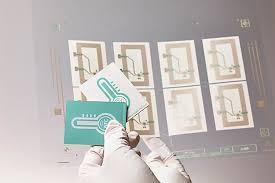Printed Sensors Market Overview: Growth Landscape, Applications, and Future Potential

The printed sensors market is evolving as a cornerstone of modern sensing technologies, offering lightweight, cost-effective, and flexible solutions across industries. As traditional sensors face limitations in miniaturization and surface adaptability, printed sensors are rising to prominence due to their customizable designs, large-scale manufacturability, and integration capabilities with flexible electronics. From medical wearables and automotive systems to smart packaging and environmental monitoring, printed sensors are reshaping how data is collected and utilized in real time.
What Are Printed Sensors?
Printed sensors are devices fabricated using printing techniques like screen printing, inkjet printing, and roll-to-roll processing to deposit functional materials onto flexible or rigid substrates. These sensors detect and measure physical, chemical, or biological signals—such as pressure, temperature, humidity, gas, and bio-signals—and convert them into electrical outputs.
Unlike conventional sensors, which often require complex manufacturing processes, printed sensors are designed to be lightweight, conformal, and economical, making them ideal for applications that require disposability, flexibility, or mass production.
Key Market Applications
The versatility of printed sensors has led to their integration across a wide range of industries:
-
Healthcare and Medical Devices
Printed biosensors are increasingly used in wearable patches, diagnostic strips, and health monitoring devices. They provide real-time data on body temperature, glucose levels, and hydration, enhancing preventive care and remote patient monitoring. -
Consumer Electronics and Wearables
Flexible printed touch and pressure sensors are vital components in smartwatches, fitness bands, and next-gen mobile devices. These sensors allow sleek, adaptable designs and improved functionality in compact gadgets. -
Automotive Industry
Printed sensors are used for pressure monitoring, temperature control, seat occupancy detection, and interior touch controls. Their low weight and adaptability help automakers achieve greater efficiency, especially in electric and autonomous vehicles. -
Smart Packaging
In food and pharmaceutical sectors, printed sensors are used to monitor temperature, freshness, and tampering. These smart packaging solutions ensure product quality and improve consumer trust. -
Industrial and Environmental Monitoring
Printed gas, humidity, and temperature sensors are employed in industrial IoT systems to monitor environmental conditions, ensure equipment maintenance, and enhance workplace safety.
Market Drivers
Several key factors are accelerating the growth of the printed sensors market:
-
Rising Demand for Wearable Technology: The global popularity of smartwatches, fitness trackers, and health-monitoring devices is fueling demand for thin, flexible, and skin-conformal sensors.
-
Advancements in Printed Electronics: Improved printing technologies and the development of advanced inks (e.g., silver nanoparticles, graphene, organic polymers) are enhancing sensor sensitivity and durability.
-
Cost-Effective Manufacturing: Printing processes offer lower material costs and faster production cycles, making printed sensors ideal for disposable and high-volume applications.
-
Sustainability Trends: The use of biodegradable materials and reduced waste in printing aligns with growing sustainability goals in packaging and electronics.
Market Challenges
Despite its promising outlook, the printed sensors market faces some hurdles:
-
Durability Issues: Ensuring long-term performance in harsh environments remains a technical challenge.
-
Standardization: The lack of universal standards can lead to performance inconsistencies and integration difficulties across platforms.
-
Integration Complexity: Merging printed sensors with existing electronics systems requires specialized materials and interfaces, which can increase development time and cost.
Regional Outlook
-
North America is a leading market, driven by strong R&D activity, early adoption of healthcare wearables, and advanced electronics manufacturing.
-
Asia-Pacific is the fastest-growing region, especially with China's dominance in flexible electronics production and India’s emerging market for low-cost healthcare and packaging solutions.
-
Europe shows steady growth, led by environmental sensor demand and innovation in automotive technologies.
Competitive Landscape
The printed sensors market is populated by a mix of established players and innovative startups. Major companies are investing in R&D, acquiring niche firms, and forming partnerships to enhance their technology stacks and market reach. Meanwhile, startups are focusing on application-specific sensor development—such as smart bandages or textile-based sensors—to carve out unique positions in the market.
Key strategies among market players include:
-
Development of multi-functional sensors (e.g., temperature + pressure)
-
Use of biodegradable or bio-compatible substrates
-
Expansion into emerging economies through strategic collaborations
Future Outlook
The future of the printed sensors market is promising, with new opportunities emerging in sectors like telemedicine, smart agriculture, logistics, and augmented reality. Continued improvements in sensor materials, data accuracy, and integration techniques will further broaden use cases and enhance value.
As global industries move toward automation, miniaturization, and sustainability, printed sensors will become indispensable tools in enabling smarter, safer, and more efficient systems.
Conclusion
In summary, the printed sensors market offers a compelling combination of flexibility, affordability, and innovation. As industries continue to digitize and modernize their operations, printed sensors are poised to play a pivotal role in enabling next-generation technologies across healthcare, electronics, automotive, packaging, and beyond. The market’s continued expansion will rely on technological advancements, ecosystem collaboration, and sustainable practices—paving the way for a smarter, sensor-driven world.
- Art
- Causes
- Crafts
- Dance
- Drinks
- Film
- Fitness
- Food
- Games
- Gardening
- Health
- Home
- Literature
- Music
- Networking
- Other
- Party
- Religion
- Shopping
- Sports
- Theater
- Wellness


